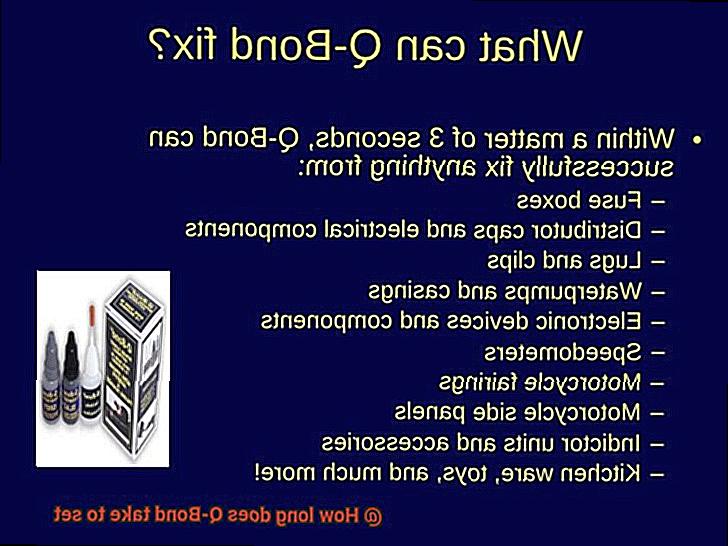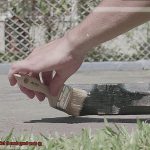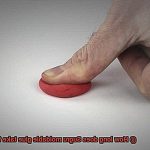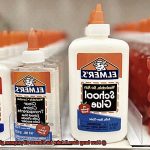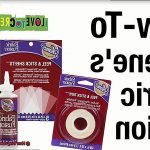Today, we’re delving into the world of Q-Bond, a game-changing adhesive that’s been winning hearts for its lightning-fast bonding abilities. Say goodbye to endless waiting and hello to instant results. Q-Bond is here to save the day, but just how long does it take to set?
In this article, we’ll uncover the mysteries behind Q-Bond’s setting time. Whether you’re a DIY aficionado or a seasoned pro, knowing how quickly Q-Bond gets the job done will revolutionize your projects and keep you ahead of schedule. So stick around (pun intended) as we unveil the secrets behind Q-Bond’s supercharged curing powers.
Setting Time: How long does it take for Q-Bond to set?
Contents
- 1 Setting Time: How long does it take for Q-Bond to set?
- 2 Factors Affecting Setting Time: What factors influence the setting time of Q-Bond?
- 3 Curing Time: How long does it take for Q-Bond to fully cure?
- 4 Manufacturer’s Recommendations: What are the manufacturer’s instructions regarding application and curing times?
- 5 External Factors: How can external factors affect the curing time of Q-Bond?
- 6 Techniques to Expedite Bonding and Curing Times: What techniques can be used to expedite bonding and curing times?
- 7 Maximum Strength: Why is it important to allow sufficient curing time for Q-Bond to reach its maximum strength?
- 8 Conclusion
When it comes to bonding and repairs, time is often of the essence. That’s why it’s important to know how long it takes for a product like Q-Bond to set and cure. In this article, we’ll explore the setting time of Q-Bond and provide you with all the information you need.

Quick Initial Bond Strength:
Q-Bond is a two-part adhesive system consisting of an adhesive and a reinforcing powder. The initial bond strength of Q-Bond develops within seconds, allowing for immediate handling of the bonded items. This means that within minutes of applying the adhesive and reinforcing powder, you can confidently handle the bonded items without fear of them coming apart.
Setting Time:
The setting time of Q-Bond can vary depending on several factors such as temperature, humidity, and the materials being bonded. Generally, Q-Bond takes around 5 to 10 minutes to set and cure fully. This relatively quick setting time makes it ideal for quick repairs or projects where time is limited.
Curing Time:
While Q-Bond sets quickly, it is important to note that the adhesive may take longer to fully cure and reach its maximum strength. The manufacturer recommends allowing at least 24 hours for the adhesive to cure completely. During this time, a chemical reaction between the adhesive and the reinforcing powder occurs, resulting in a strong and durable bond.
External Factors:
The curing time of Q-Bond can be influenced by external factors. Colder temperatures may slow down the chemical reaction and prolong the setting time, while warmer temperatures can accelerate the curing process and reduce the setting time.
Additionally, higher humidity levels may also affect the curing time. It is important to consider these factors when using Q-Bond to ensure optimal bonding results.
Factors Affecting Setting Time: What factors influence the setting time of Q-Bond?
Look no further. Q-Bond, the extraordinary adhesive system, has arrived to revolutionize your bonding projects with its lightning-fast setting time. But have you ever pondered the factors that influence this impressive feat?
In this enlightening exploration, we will delve into the science behind Q-Bond’s setting time and uncover the secrets hidden within temperature, humidity, surface preparation, and the amount of adhesive applied.
Temperature: The Catalyst of Quickness
Just like a catalyst in a chemical reaction, temperature plays a pivotal role in Q-Bond’s setting time. Higher temperatures ignite a frenzy of molecular activity, accelerating the curing process with unrivaled speed.
Conversely, lower temperatures tame the rushing molecules, slowing down the process to ensure precision and strength. Strike the perfect balance and witness the magic unfold.
Humidity: The Dance of Moisture
Humidity adds a twist to the dance of setting time. High humidity levels can extend the setting time by meddling with the moisture-curing mechanism of certain adhesives, causing them to take a leisurely path towards completion.
On the other hand, low humidity levels infuse a sense of urgency, urging the adhesive to reach its full potential quickly. Strike a delicate equilibrium between moisture and dryness for optimal bonding results.
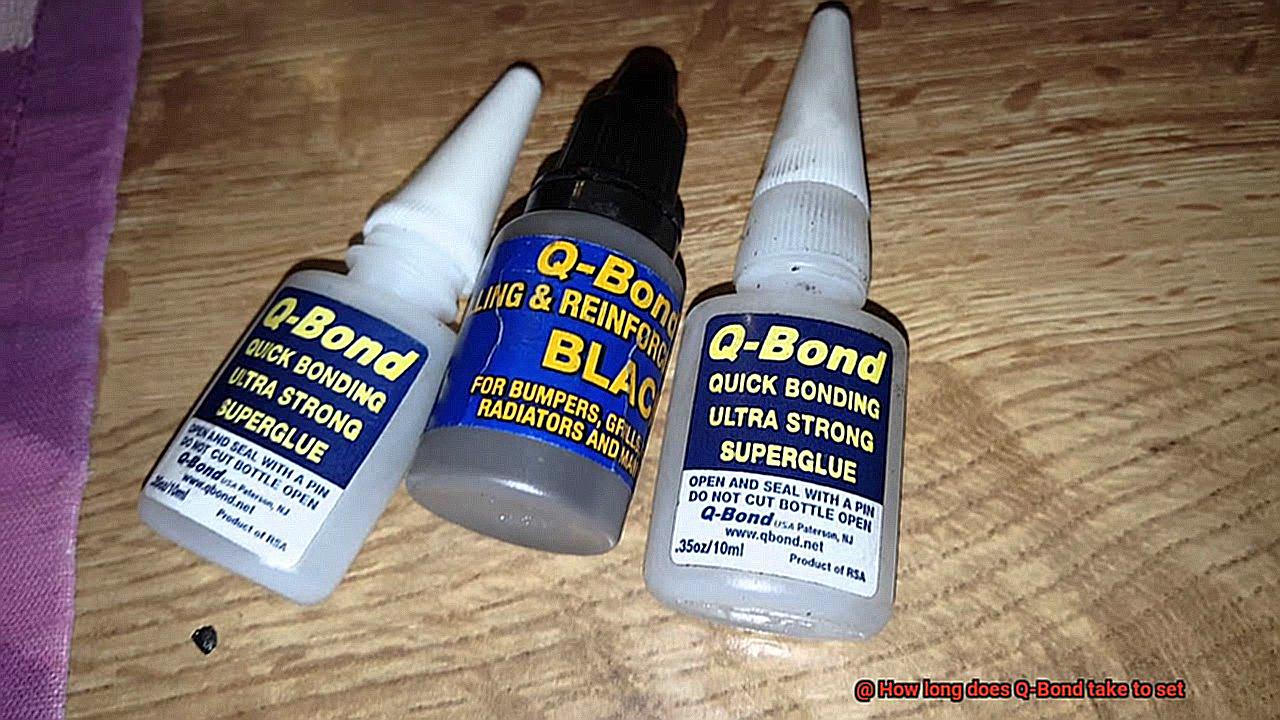
Surface Preparation: The Canvas for Mastery
A masterpiece requires a pristine canvas, and so does Q-Bond’s setting time. Prepare your surfaces meticulously, banishing all contaminants like oil, grease, or dust that dare to mar the bond. Embrace the art of roughening or etching certain surfaces, creating an expansive playground for adhesive adhesion and reducing setting time with finesse.
Amount of Adhesive Applied: The Goldilocks Principle
Finding the Goldilocks zone for adhesive application is an art of its own. Apply too much and the setting time elongates as the adhesive yearns for ample time to cure every nook and cranny. Apply too little, and the bond weakens, resulting in shorter setting times and subpar results. Let the manufacturer’s guidelines be your guiding light, striking the perfect balance that unlocks optimum strength and speed.
Curing Time: How long does it take for Q-Bond to fully cure?
Look no further than Q-Bond, the adhesive that defies time. In this blog post, we will delve into the realm of Q-Bond and unravel the mysteries of its curing time. Whether you’re a DIY enthusiast or a professional repair technician, understanding how long it takes for Q-Bond to fully cure will revolutionize your project planning.
The Curing Process:
Q-Bond possesses a secret power hidden within its unique chemical composition and rapid-acting formula. Once applied, Q-Bond instantaneously initiates the curing process. A mesmerizing chemical reaction takes place, transforming the adhesive from a liquid state to a solid one. As solvents vanish into thin air, polymer chains interlock, creating a bond that is as sturdy as it is resilient.
Factors Affecting Curing Time:
Numerous factors come into play when determining the curing time of Q-Bond. Temperature assumes a leading role – soaring temperatures accelerate the transformation, while frigid conditions slow it down. Humidity levels also exert their influence. Elevated humidity can extend the curing time, while arid environments expedite it. To achieve optimal results, apply Q-Bond in a well-ventilated area boasting moderate temperature and humidity conditions.
Typical Curing Time:
Q-Bond’s ability to cure with lightning speed is nothing short of astounding. Within a mere 5 to 10 minutes of application, the adhesive attains touch dryness. However, it is essential to note that although it may feel dry to the touch, additional time is necessary for full cure and maximum strength to manifest. For unparalleled bonding strength and durability, allow Q-Bond at least 24 hours to reach its zenith before subjecting it to formidable loads or stress.
Tips for Faster Curing:
If your schedule demands an even faster curing time, unleash the following tricks. Utilize external heat sources such as heat guns or hairdryers to expedite the process. Nevertheless, exercise caution to prevent overheating and safeguard the materials being bonded.
Manufacturer’s Recommendations: What are the manufacturer’s instructions regarding application and curing times?
When using Q-Bond adhesive, it is essential to follow the manufacturer’s instructions for application and curing times. These recommendations are designed to ensure optimal results and the longevity of the bond. Let’s explore the specific instructions provided by the manufacturer in detail:
Surface Preparation:
Before applying Q-Bond, it is crucial to properly prepare the surfaces to be bonded. The manufacturer’s instructions will guide you on how to clean and roughen the surfaces if necessary. This step is essential as it enhances the effectiveness of the bond and ensures a long-lasting connection.
Application Techniques:
To achieve a strong bond, it is important to follow the manufacturer’s recommended application techniques. The instructions may include specific recommendations for different materials and surfaces. By following these guidelines, you can ensure that the adhesive is applied correctly, maximizing its bonding strength and durability.
Curing Time:
Patience plays a key role in achieving a top-notch Q-Bond bond. The manufacturer’s instructions will specify the required curing time for the adhesive. Factors such as temperature and humidity can influence this timeframe, so it is vital to follow the guidelines closely. Rushing the curing process can compromise the bond’s strength, leading to potential disappointments down the line.
Variants and Curing Times:
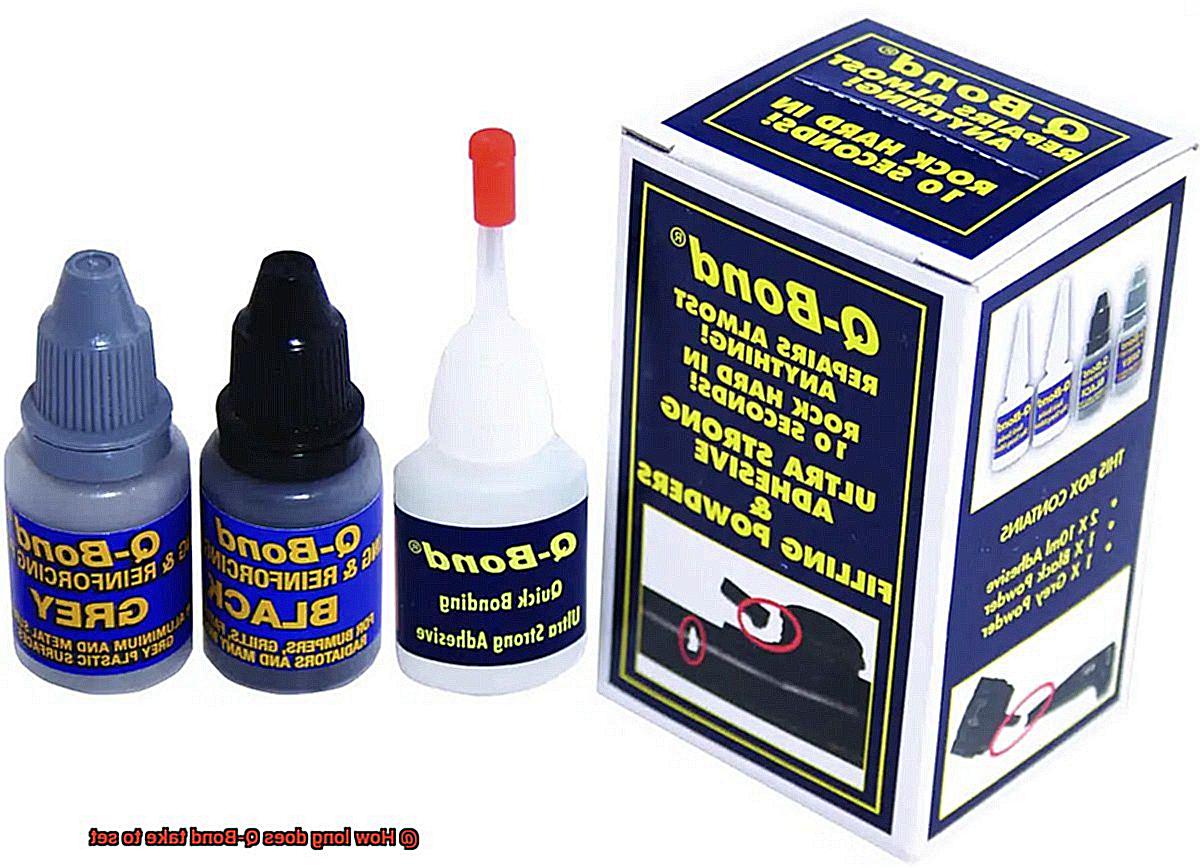
Different variants of Q-Bond may have varying curing times. It is important to consult the specific product instructions for accurate information on curing times. Do not assume that all Q-Bond adhesives share the same characteristics – take a moment to get acquainted with your specific variant.
Precautions:
The manufacturer’s recommendations may include additional precautions during the curing process. These precautions could involve avoiding exposure to specific substances or environments that may hinder the bond’s integrity. By following these instructions, you can ensure that your Q-Bond bond reaches its full potential, free from any external factors that may compromise its strength.
External Factors: How can external factors affect the curing time of Q-Bond?
Imagine being on the brink of completing a DIY project with the magical adhesive known as Q-Bond, only to realize that external factors can disrupt its curing time. The key lies in unraveling the impact of temperature, humidity, pressure, airflow, and substrate type on this process. By mastering these factors, you can achieve flawless results.
Temperature:
Temperature is a core player in the curing time of Q-Bond. Higher temperatures ignite chemical reactions, speeding up the cure. Conversely, lower temperatures put the brakes on the process. Staying within Q-Bond’s optimal temperature range ensures quality and performance.
Humidity:
Humidity levels hold sway over curing time. High humidity hampers drying by interfering with moisture evaporation. Low humidity, on the other hand, accelerates curing by allowing efficient evaporation. Seek moderate humidity for consistent results.
Pressure:
Applying pressure during bonding intensifies surface contact and enhances adhesion. This compression turbocharges molecular interaction within the adhesive, expediting curing time. But tread carefully to avoid excessive pressure that leads to squeeze-out or distortion.
Airflow:
Proper airflow is a game-changer for curing time. It aids solvent or moisture evaporation and speeds up the cure. Too little airflow prolongs drying time, while excessive airflow results in quick but weak bonds.
Substrate Type:
Materials possess distinct porosities and surface characteristics that influence adhesion and curing time. Porous materials demand longer curing times as the adhesive penetrates for a solid bond. Non-porous materials require less curing time as surface penetration is unnecessary.
Techniques to Expedite Bonding and Curing Times: What techniques can be used to expedite bonding and curing times?
There are several techniques that can be employed to expedite bonding and curing times for your adhesive.
Firstly, increasing the temperature during the bonding process can work wonders. Heat speeds up the chemical reactions involved in curing, leading to faster bonding. External heat sources like heating pads or lamps can be used to achieve this. However, it’s important to follow the manufacturer’s guidelines as excessive heat can have adverse effects on certain adhesives.
Applying pressure during the bonding process is another effective technique. By applying pressure, maximum contact between the adhesive and the surfaces being bonded is ensured, resulting in a stronger and faster bond formation. Clamps, weights, or specialized tools designed for this purpose can be used to apply pressure. Refer to the product instructions for the optimal duration of pressure application.
For those in a hurry, accelerators or activators can be a game-changer. These substances, applied before bonding, speed up the adhesive’s curing process. Accelerators work well with cyanoacrylate adhesives (super glue) as they react with moisture in the air to form strong bonds rapidly. Always check for compatibility before using accelerators.
Lastly, selecting the right adhesive for your specific application can expedite bonding and curing times. Some adhesives are designed for fast bonding and curing, offering quicker drying or setting times compared to traditional adhesives. Consider factors such as materials being bonded and environmental conditions when choosing an adhesive.
Maximum Strength: Why is it important to allow sufficient curing time for Q-Bond to reach its maximum strength?
Q-Bond is no ordinary adhesive. With its quick-setting properties, it has earned a reputation for being a versatile and powerful bonding agent. But here’s the catch: to truly harness the unrivaled strength of Q-Bond, you must exercise patience and allow it sufficient curing time. In this article, we will explore why patience is the secret ingredient that unlocks Q-Bond’s maximum strength, ensuring unparalleled performance.
The Science Behind Curing:
Curing is more than just a fancy term; it’s the magic that happens within Q-Bond. Chemical reactions take place, transforming this adhesive into a solid bond. While Q-Bond may set rapidly, rushing the curing process can compromise its strength and leave you with lackluster results.
Benefits of Sufficient Curing Time:
- Unbreakable Bonds: Giving Q-Bond ample time to cure means it will reach its full potential and provide unbeatable strength, durability, and reliability.
- Avoiding Catastrophic Failure: Applying stress or load to the bonded area prematurely can lead to disastrous consequences, resulting in the need for reapplication. Patience now saves you time and frustration later.
- Peak Performance: Fully cured Q-Bond delivers exceptional performance, making it your go-to adhesive for various applications.
Factors Influencing Curing Time:
The curing time for Q-Bond isn’t set in stone; it depends on variables such as temperature, humidity, and the materials being bonded. To ensure optimal curing, consult the product instructions or reach out to the manufacturer for specific guidelines.
Patience Pays Dividends:
- Rest and Reap: Once Q-Bond has reached its peak strength, don’t rush into action just yet. Allow the bonded area to rest undisturbed for an extended period. This further enhances bond strength and ensures your project withstands the test of time.
- Timing is Everything: Curing time for Q-Bond spans from a few minutes to several hours, depending on the circumstances. Don’t cut corners; let time work its magic.
Conclusion
In conclusion, Q-Bond is a revolutionary adhesive that boasts lightning-fast bonding capabilities, making it a game-changer for all your DIY projects and repairs. The setting time of Q-Bond can be influenced by various factors, including temperature, humidity, and the materials being bonded. Typically, you can expect Q-Bond to set and cure fully in just 5 to 10 minutes. This remarkably swift setting time makes it the perfect choice for time-sensitive projects.
However, it’s important to note that while Q-Bond sets quickly, it may take longer to reach its maximum strength and fully cure. To ensure optimal results, the manufacturer recommends allowing a minimum of 24 hours for the adhesive to completely cure. During this crucial period, a chemical reaction occurs between the adhesive and the reinforcing powder, resulting in an unyielding and long-lasting bond.
It’s worth mentioning that external factors such as temperature, humidity levels, surface preparation, and even the amount of adhesive applied can influence the setting and curing time of Q-Bond. Therefore, taking these variables into account is essential when working with this remarkable adhesive.
To achieve outstanding results with Q-Bond, it’s vital to adhere strictly to the manufacturer’s instructions regarding application techniques, curing times, surface preparation steps, and safety precautions. Additionally, employing techniques like increasing temperature during bonding or applying pressure can expedite both bonding and curing times. Furthermore, utilizing accelerators or activators specifically designed for Q-Bond can also help speed up the process.
While we understand that impatience may arise when using Q-Bond due to its rapid setting time potentialities, it’s crucial not to rush the curing process. Allowing sufficient time for proper curing ensures maximum strength and performance from your bonds. Cutting corners in this regard may compromise their durability over time.

